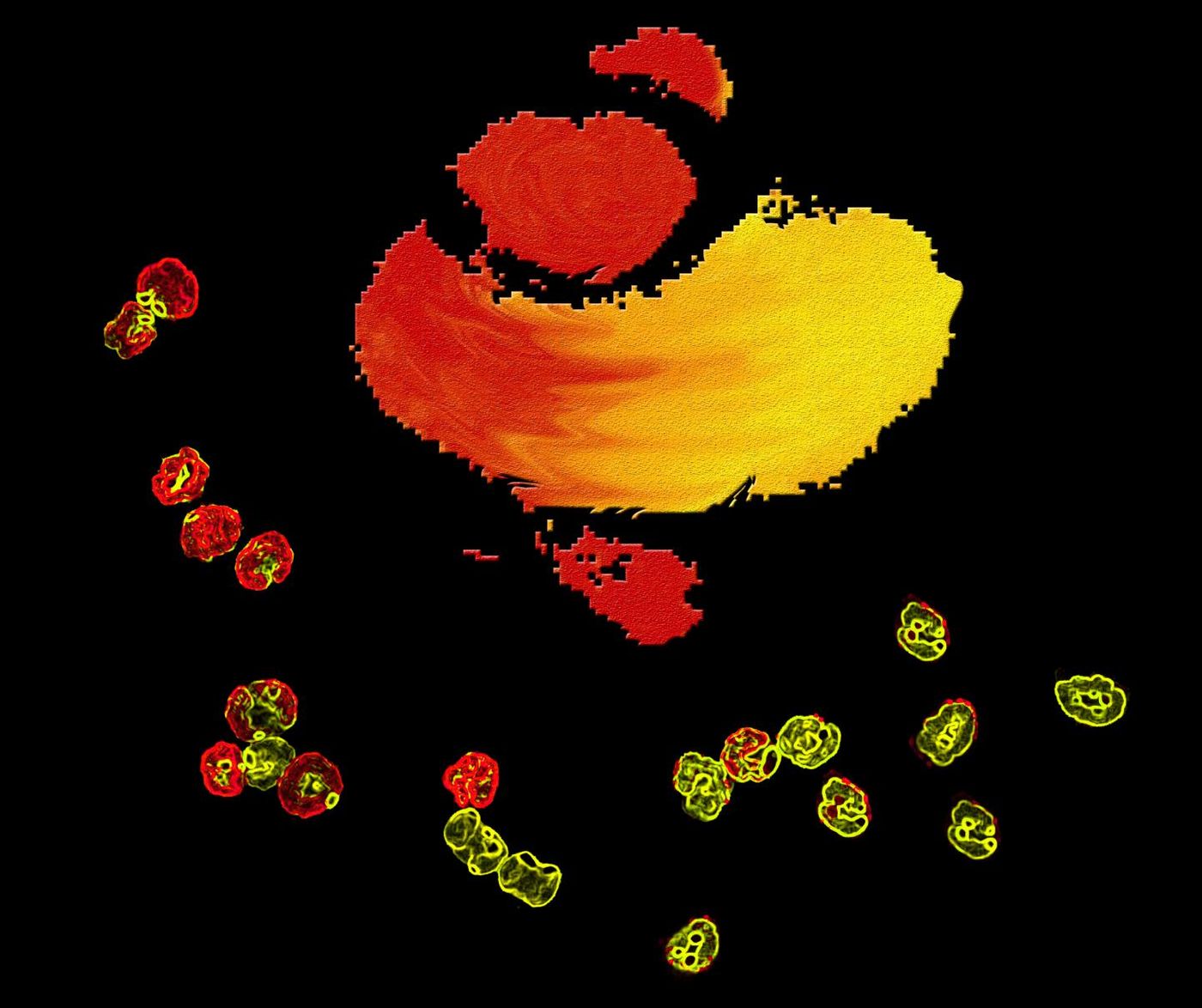Finding the Source of a Common Immune Cell
Neutrophils are a highly abundant type of immune cell, outnumbering every other kind that runs through the bloodstream. But where these cells come from has remained a mystery, until now. Scientists at La Jolla Institute for Allergy and Immunology have traced them back to a progenitor cell in bone marrow. Publishing in Cell Reports, they have also linked these cells to the growth of cancer. This work could help improve treatments for chronic inflammation, neutropenia, and cancer. These cells may also serve as an early warning sign of cancer because these progenitors are found at higher levels in people with melanoma.
"For many years, the cancer immunology field has been really focused on T cells, which led to the development of checkpoint blockade and CAR-T therapies but there's a whole other arm of the immune system that plays a role in tumorigenesis," noted study leader Catherine Hedrick, Ph.D., a professor in the Division of Inflammation Biology. "We found that this particular subset of progenitor cells that promotes tumor growth and shows up in high numbers in melanoma patients. If our initial findings hold up across the board, a simple blood test could indicate if you have cancer or not."
Neutrophils play a variety of essential roles. They show up to defend the body against invading pathogens; they are on the front lines and can destroy germs, then mop up the mess and alert other parts of the immune system. They are also players in inflammation that has been linked to various diseases. Although they are a vital cell type, scientists took a while to figure out that they came from bone marrow, the site of many progenitor cells.
"Over the years, people identified different white blood cell progenitors, but the one that was missing was the neutrophil progenitor because we didn't have the tools to pull the populations apart," explained first author Yanfang Peipei Zhu, Ph.D., a postdoctoral researcher. "Now, we can study disease where neutrophils execute unique and important functions and investigate further how certain subsets of them promote tumor growth."
The researchers utilized high-dimensional mass cytometry, a tool also known as cytometry by time-of-flight (CyTOF) to learn more about these cells. The technique (described in the video) enabled them to analyze 39 different identifiers that distinguish various cell types, simultaneously. That effort led the team to find a new population of progenitor cells. Further study of these cells showed that they were progenitors that only created neutrophils, concluding the search.
After conducting that work in mice, Zhu’s team looked at human bone marrow and found the parallel human cell type.
"It seems this progenitor works through T cells, possibly suppressing them and turning them off but we still need to look at the mechanism," said Zhu.
Interestingly, Zhu also found that in patients with melanoma, there were elevated levels of neutrophil progenitors. Zhu wants to follow up on that finding with other types of cancers. "If so, it could be used as a simple biomarker for early cancer discovery," added Zhu.
Sources: AAAS/Eurekalert! Via La Jolla Institute for Allergy and Immunology, Cell Reports









